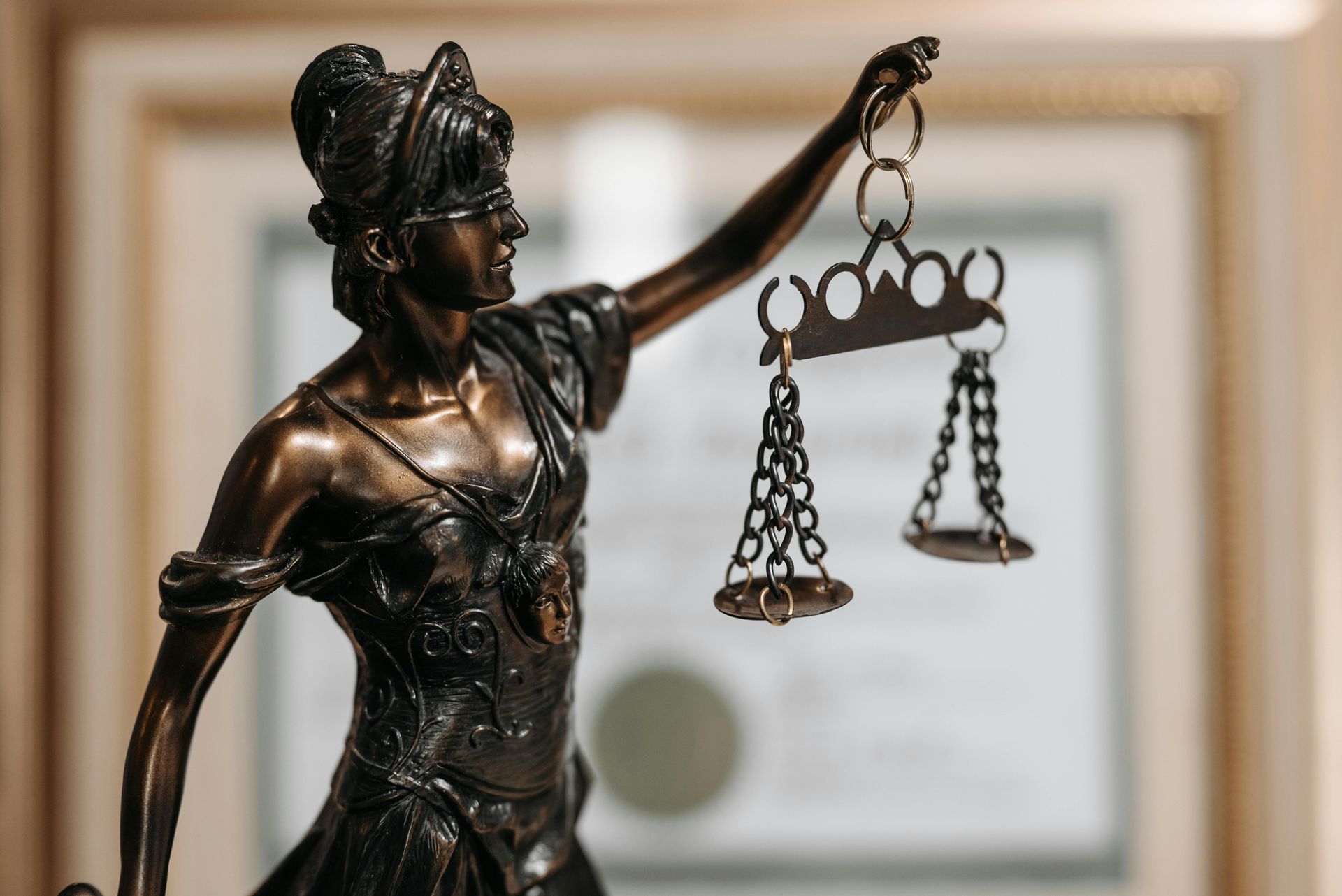Criminal Laws: Essential Insights for Understanding Your Rights
Criminal law is the backbone of societal order, defining parameters for justice and ensuring a balance between public safety and individual rights. In this guide, we explore the intricacies of criminal law—from the nuances of federal versus state regulations to the core legal principles that govern criminal trials, punishment, and rehabilitation strategies.
For students, legal professionals, and those intrigued by the legal system, this comprehensive overview clarifies the criminal law definition, outlines procedural intricacies, and discusses strategies behind successful criminal prosecutions and defenses in our modern legal system.
Foundations of Criminal Law Laws
Definition and Scope
Criminal law establishes the framework used to define and penalize behaviors that are harmful or dangerous to society. These laws differ significantly from civil law, which primarily addresses disputes between individuals or organizations. In criminal law, the focus is on offenses that compromise public order, such as violent crimes, property crimes, and various forms of illegal conduct.
The scope of criminal law is vast, encompassing a range of offenses from minor infractions to heinous offenses. Whether discussing the fundamentals of criminal procedure or the application of the criminal code, understanding these laws is essential for anyone involved in legal proceedings or interested in how society regulates criminal behavior.
Distinctions from Civil Law
Criminal law laws serve a different purpose compared to civil law. While civil law resolves disputes between private parties and often seeks monetary compensation for wrongs, criminal law is concerned with punishing actions that disrupt public safety. This includes imposing incarceration, fines, or community service as sanctions for offenses committed.
The enforcement mechanisms in criminal law are also more stringent. In criminal cases, the burden of proof is on the prosecution to establish guilt beyond a reasonable doubt. This contrasts sharply with civil cases, where the standard of proof is typically lower. These differences underline why criminal law is uniquely designed to address conduct that threatens broader societal interests.
Societal Impact and Historical Evolution
Criminal law has continuously evolved to meet the changing values and norms of society. Historically rooted in common law, the current statutory codes reflect adaptations made in response to landmark cases and significant social movements. This evolution has seen a gradual shift from purely retributive justice toward approaches that also emphasize rehabilitation.
The transformation of criminal law can be observed in changes to sentencing practices and judicial discretion. Reforms introduced over time have led to more balanced punitive measures and rehabilitation strategies designed to reduce recidivism. Understanding this historical evolution aids legal professionals by providing context for current legal procedures and strategies employed in modern criminal cases.
Federal vs. State Criminal Law
Differences in Jurisdiction and Scope
Federal criminal laws are designed to handle offenses that cross state lines or affect national interests. Examples include organized crime, drug trafficking, and cyber offenses. In contrast, state-specific criminal laws govern crimes committed within local boundaries, addressing issues that align with community-specific social norms.
These jurisdictional differences also extend to territorial and extraterritorial dimensions. Federal criminal law may come into play when international elements or national security concerns are involved. This layered structure ensures that both federal courts and state courts can address the full spectrum of criminal offenses committed within their respective territories.
Role of the Federal Government
The federal government plays a critical role in formulating and enforcing criminal laws. Through legislative actions, federal statutes are enacted to target crimes that threaten national security, economic stability, or other areas of federal interest. For instance, federal criminal law covers offenses like money laundering, terrorism, and large-scale cyber fraud.
Federal criminal law also provide a framework for cooperation between agencies at different levels of government. By aligning investigative practices with constitutional protections—such as the Fourth Amendment’s safeguard against unreasonable searches—the federal government ensures that legal proceedings uphold the rights of citizens while addressing offenses that cross state or international borders.
Classifications and Elements of Criminal Offenses
Categorizing Criminal Offenses
Criminal law categorizes offenses into distinct groups such as felonies, misdemeanors, and infractions. Felonies are reserved for the most serious crimes, often resulting in severe penalties, including long-term incarceration or even capital punishment in extreme cases. Misdemeanors, on the other hand, are less severe and may involve fines or short-term detention, while infractions generally attract penalties like monetary fines.
These classifications also influence aspects of legal proceedings. For example, the categorization of a crime under criminal law affects the selection of defense strategies, the potential available sentences, and the resources allocated to a criminal trial. This detailed categorization is essential for understanding both the nature of criminal charges and the appropriate legal processes required for prosecution.
Requisite Mental State and Elements of Liability
Central to criminal law is the requirement to establish both the actus reus (the physical act) and mens rea (the requisite mental state) behind an offense. The legal principle of “beyond a reasonable doubt” ensures that criminal prosecution only results in conviction when a high level of certainty about the defendant’s culpability is reached.
Furthermore, factors such as aggravating or mitigating circumstances play significant roles in determining criminal liability. Whether a case involves reckless disregard, self-defense, or community service as an alternative to incarceration, understanding these elements is critical. The integration of these fundamental concepts within criminal law laws safeguards the fairness and consistency of legal proceedings.
Criminal Procedures and the Justice Process
Pre-Trial Investigations and Procedures
Comprehensive pre-trial investigations are the backbone of effective criminal law laws. Law enforcement agencies meticulously gather evidence, interview witnesses, and establish probable cause before moving forward with an arrest. Sound investigative practices not only build a solid foundation for legal proceedings but also help prevent wrongful accusations.
These pre-trial procedures are integral to the criminal justice system as they ensure that only cases with substantiated evidence proceed to trial. Whether dealing with minor offenses or cases involving more serious criminal behavior, the integrity of the investigation is paramount in upholding both constitutional rights and the principles of a fair trial established under criminal law.
Arrest Procedures and Fourth Amendment Considerations
Arrest procedures under criminal law laws are governed by constitutional safeguards such as the Fourth Amendment. These procedures ensure that searches, seizures, and the collection of evidence are conducted lawfully and with respect for individual rights. Evidence obtained without adhering to these standards is typically rendered inadmissible in court, reinforcing the principle of a fair trial.
The careful balance between effective law enforcement and protection of civil liberties is maintained throughout arrest procedures. For example, police officers are trained to follow established protocols that minimize any infringement on constitutional rights. Such adherence to legal standards under criminal law is critical in fostering public trust in the criminal justice system.

The Criminal Trial: Arraignment, Plea Bargaining, and Jury Selection
Once the pre-trial phase is complete, the criminal trial process begins under the framework established by criminal law. The initial hearing, or arraignment, notifies the defendant of the charges and their constitutional rights. Following this, plea bargaining can occur, where prosecuting attorneys and defense lawyers negotiate to resolve some or all charges in exchange for a guilty plea.
Jury selection is another essential component of the trial process. An impartial jury, drawn from the general population, is vital to ensuring that justice is administered without bias. The trial phase also involves presenting key evidence, often including digital evidence in today's technologically advanced investigations, and legal arguments to prove guilt beyond a reasonable doubt. This multi-step process is designed to protect the rights of the defendant while rigorously upholding criminal law.
Sentencing, Punishment, and Rehabilitation Strategies
Sentencing Options and Judicial Discretion
Following conviction, criminal law laws empower judges with the discretion to impose appropriate sentences. Sentencing options can range from incarceration and fines to community service and, in the most severe cases, the death penalty. Judicial discretion allows individual circumstances to influence sentencing, ensuring that punishment is tailored to both the nature of the criminal offense and the defendant’s past behavior.
This flexibility in sentencing is critical for addressing the intricacies of each criminal case. For instance, mitigating factors such as a defendant’s remorse or lack of prior criminal history can result in lighter penalties, while aggravating factors might lead to more severe punishments. Ultimately, the application of sentencing guidelines under criminal law strives to achieve a balance between retribution and rehabilitation.
Balancing Punitive Measures and Rehabilitation
Modern criminal law increasingly emphasizes balancing punishment with rehabilitation. While punitive measures serve to deter criminal conduct and protect society, rehabilitation programs aim to reintegrate convicted offenders back into the community. Initiatives involving education, vocational training, and counseling have proven effective in reducing recidivism rates.
The dual emphasis on punitive measures and rehabilitation under criminal law reflects a broader social commitment to transforming offenders into productive citizens. By focusing on both the punishment of criminal offenses and the long-term improvement of offenders, the legal system can better address the root causes of criminal behavior, leading to safer communities and more just outcomes.
Critical Roles within the Criminal Justice System
Responsibilities of Prosecutors and Defense Attorneys
Within criminal law, the roles of prosecuting attorneys and defense lawyers are pivotal. Prosecutors are tasked with proving that a crime has been committed, presenting evidence with the standard of proving guilt beyond a reasonable doubt. At the same time, defense attorneys work diligently to protect the rights of the accused and challenge the evidence presented.
This adversarial balance is essential for ensuring a fair trial under criminal law. Both sides must adhere rigorously to legal procedures, and the interplay between prosecuting attorneys and defense lawyers ultimately strengthens the integrity of the criminal justice system.
Law Enforcement and Community Safety
Law enforcement officers are often the first line of defense in maintaining public order under criminal law. They are responsible for executing arrest procedures, preserving the scene, and securing evidence that will later be used in legal proceedings. Their work is conducted under strict guidelines to ensure that constitutional rights are respected while effectively combating criminal behavior.
The commitment of police officers to due process and ethical standards under criminal law laws builds public trust in the legal system. By engaging with community leaders and implementing fair practices, law enforcement not only helps in prosecuting criminal offenses but also reassures the community of their safety and well-being.
Emerging Trends and Future Challenges in Criminal Law
Technological Advancements and Digital Evidence
The rapid advancement of technology has significantly impacted criminal law, particularly in the realm of digital evidence. With the proliferation of cybersecurity threats and online criminal activities, federal criminal laws and state-specific regulations now increasingly incorporate digital forensics. Law enforcement agencies and prosecuting attorneys must stay abreast of advances in technology to effectively collect and analyze digital data.
Digital evidence plays a critical role in modern criminal trials, where techniques such as data mining and forensic video analysis help establish the occurrence of a crime. Incorporating these innovations while adhering to constitutional safeguards, such as the protection against unlawful search and seizure, is pivotal for the evolution of criminal law.
Future Challenges and Necessary Reforms
As criminal law continues to evolve, several challenges loom on the horizon. Future reforms must address concerns related to privacy in an era of mass data collection and artificial intelligence–assisted investigations. Balancing public interest and constitutional rights remains central to the discourse on legal reform.
Emerging trends also demand that legal systems adapt by revising sentencing guidelines and updating procedural standards. Reforms aimed at enhancing transparency, accountability, and fairness—whether through the Model Penal Code or through amendments to existing statutes—ensure that criminal law laws remain effective in addressing offenses committed in an ever-changing societal landscape.
Practical Insights for Legal Professionals and Students
Effective Study Strategies and Resource Recommendations
For legal professionals and students alike, mastering criminal law requires a combination of theoretical learning and practical application. Effective study strategies include detailed case briefings, participation in collaborative study groups, and continuous engagement with landmark criminal trials. Utilizing digital legal databases and attending continuing legal education (CLE) seminars can further deepen one’s understanding of both federal and state criminal law.
Resource recommendations, such as specialized textbooks and online legal journals, are invaluable for staying up-to-date with legal reforms and procedural updates. These resources serve as essential tools for navigating the complexities of criminal law and establishing a robust knowledge base that informs both academic pursuits and practical legal practice.
Case Examples and Measurable Outcomes
Analyzing real-world case examples illustrates the practical application of criminal law effectively. For instance, defense teams employing digital forensic evidence in federal criminal trials have successfully introduced reasonable doubt, leading to reduced criminal charges and lower associated legal costs. Such outcomes highlight the importance of integrating modern technology with traditional legal principles and demonstrate measurable improvements in the criminal justice system.
Case studies also reveal that judicial discretion—guided by factors like aggravating circumstances or community service alternatives—can significantly influence sentencing. By studying these practical examples, legal professionals and students can gain deeper insights into the strategies that support fair and effective administration of criminal law laws.
Conclusion
Criminal law is fundamental to maintaining public order and safeguarding individual rights, distinguishing itself from civil law through rigorous procedures and stringent penalties. As legal professionals and students prepare to navigate future challenges, they must remain adaptive and informed.
Embracing new technologies, refining legal strategies, and balancing punitive measures with rehabilitation will continue to redefine the landscape of criminal law, ensuring a legal system that is as equitable as it is robust. Contact now https://www.jalallaw.com/!











